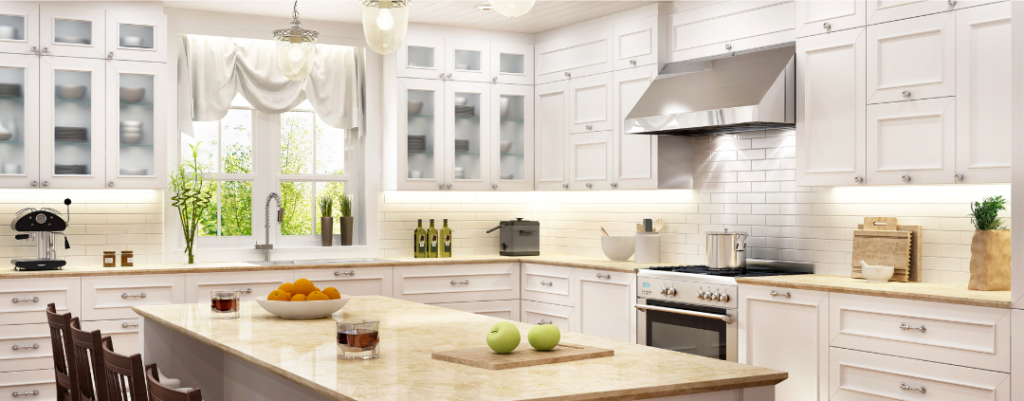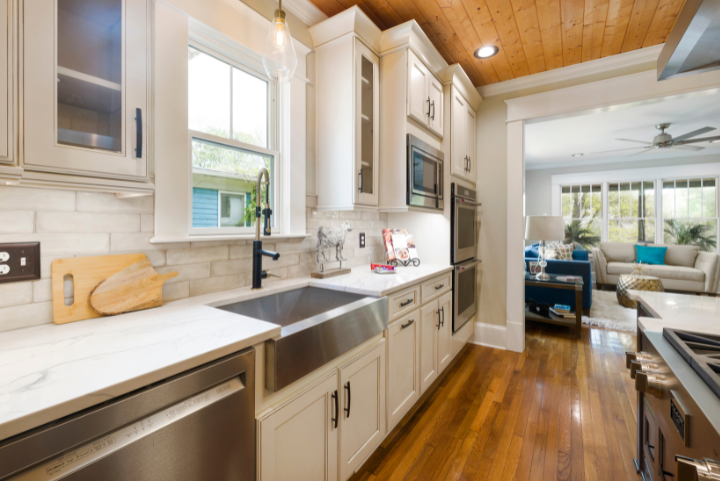The History of Interior Design
Interior design did not exist as a career in ancient times like architecture or medicine. Yet old civilizations have adopted its principles and techniques. And on that, we build our methods for creating intricate concepts nowadays.
In this blog, we’re going to cover the interior design timeline. Hop in for a historical trip full of whimsical patterns and eclectic spaces!

Interior Design Origins
We can trace back interior design History to ancient civilizations. Here are the fundamental ones:
Ancient Egypt
Repetition refers to a pattern, form, or element that appears many times in a design. We apply this theory in a variety of ways like flooring and ceilings. This idea has its origins in ancient Egypt. They applied it in rings and patterns. They concentrated on circles because they were people that valued cycles. They played around with various furniture items, such as the famous Egyptian stool.
Ancient Greece
The Greeks valued symmetry, form, and proportion. They represented perfection in its purest form. They worked on architectural molding to create contrast between light and dark.
The Romans
The Romans followed the Greeks. They used concrete in their structures. This new material allowed to have monumental buildings. They began to investigate the inside space, using brick and other materials as they went.
The Middle Ages
The Middle Ages lasted for 100 years. A period that began with the fall of the Roman Empire. Religious, political, and social disputes were prevalent at the time. You witness the construction of memorial buildings, churches, and temples. You often find a contrast between the decorated inner space and the simple exterior. They believed that this added to the building’s aesthetic appeal.
The Renaissance

The Renaissance is exactly what it sounds like- a revival or rebirth. The reevaluation of the worth of historical artifacts. During this time, people reintroduced traditional and cultural themes. They created furniture and defined the notion of unity in an interior space. Artisans, craftsmen, and cabinet builders designed the inside of dwellings for the aristocracy.
From being a minor side work, interior design matured into a field with set principles.
Key Designers Throughout History
Many names shined in interior design history.
One well-known cabinet-maker named Thomas Chippendale created a book for his furniture designs. His customers made selections for their homes with this marketing tool. It was the first catalog of its kind.
Another prominent name in interior design History is Robert Adam. He was a furniture maker and interior architect. He adopted the method of matching the pattern on the ceiling to the pattern on the floor. Additionally, he incorporated plastering molds to provide the space with remarkable depth. He was famous for his balance in using all the interior design elements and principles.
The first professional designer hired to decorate a home was Elsie de Wolfe in the early 1900s. She stood out for using light bright concepts instead of the famous Victorian style. In 1905, she designed the Colony club for Women which was a major turnover and exposure in her career.

Sister Parish was famous for designing the Kennedy white house. Her style was English and French-inspired furniture painted floors and striking chintz. She used brand furniture pieces and had an eccentric style. Later on, she partnered with Albert Hadley. Together they found the Parish-Hadley, Associates. which had a great impact on the field.
Dorothy Draper set up her design firm in the 1920s. It was the first commercial interior design firm in History. You find her work in the Greenbier, the Carlyle and Hampshire House Hotels, and many more projects. She’s known for the checkerboard floors, and plaster moldings. She used wide steps for the walls as well as her famous “Brazzilliance” wallpaper.
Syrie Maugham was famous for her boldness in style. The perfect example is her monochrome all-white music room in London’s King’s road.
Candace Wheeler is a textile designer. Unlike her socialite predecessors, she wanted her products to be affordable. She had no financial or social backup. So she only relied on her talent and self-consciousness. And by all accounts, it was enough! Wheeler became an inspiration for women to excel in the career world.
A lot of designers left us a rich legacy. Like David Hicks, Charles & Ray Eames, Philippe Starck, and many more.
Interior Design History
Each historical period saw interior design adopting a new character. Here is a brief interior design timeline:
Throughout the 15th and 16th centuries, architects began to focus on interior space. It was then, during the French Renaissance that they took the interior decoration part as a task on its own.
Early 18th century: We see the rise of the Rococo style in Europe. Distinguished with scrolling curves, sculpted molding, and natural ornamented forms.
In the last half of the 18th century, the first industrial revolution happened. So a wide range of materials was available. This led to the usage of brilliant hues. People began to contemplate wallpaper for the walls and carpet for the floors. They began painting the ceilings.
The late 18th century saw the Neoclassical look. It focuses on straight lines and classical architectural elements. You see often Greek pillars, symmetry, and balance inside a house.
The Victorian style emerged in 1837. The focal point was the collection of ornamental pieces. The use of complementary colors was a rule of thumb.
In the 1840s the Tuscan, Rustic, and Art Nouveau styles saw the light. They are still used by designers till now.
Early 1900, we saw the rise of the eclectic style. It was all about the combination of patterns. It involved the use of traditional elements and furniture with modern features. Many famous interior designers adopted the eclectic feel in their concepts.
1913, Elsie de Wolfe got the first official paid task to decorate a home. She later published the first interior design book called “The house in Good taste”.
1923 Dorothy Draper established the first documented interior design firm. She named it Architectural Clearing House.
This was the debut of interior design. With leading women and the eclectic style dominating at the time. People were looking to stand out while maintaining the balance and harmony of a space.
Where is Interior design now?
Interior design today reminds you a little of the early 20th-century style, with a twist. We use wallpaper as a piece of art. You see bold colors and abstract shapes on walls. Interesting color combinations, such as the monochrome Palette. Ehem… Syrie, if you know, you know! Concrete is not only a construction material, it is also an accent. You see concrete counters, and flooring polished or washed. Smart technology for your house is the norm. We are also more conscious of our environment. This means that sustainability is well thought out in every concept.
So what’s in for the future of the interior design timeline?
Today we are living in the Contemporary period. The purpose of interior design is to create an organized clean feel. We live in the era of developing technologies and metaverses. Human imagination is easily adaptable to reality. There are countless directions that the interior design timeline could develop. Our purpose is straight. To strengthen the bond between people who live within and the vibrant world outside.
